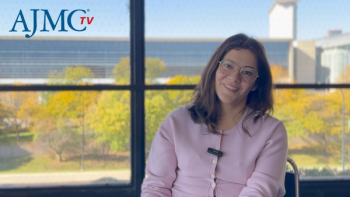
Do Patients With COPD Use End-of-Life Care Strategies?
Even though patients with advanced chronic obstructive pulmonary disease (COPD) can suffer from the same distressing symptoms as those with end-stage cancer, they are less likely to receive palliative care than those with other terminal illnesses, a recent study found.
Even though patients with advanced
A recent Canadian study examined trends in the use of end-of-life care strategies by people with advanced COPD in Ontario, the largest province in Canada, over 10 years.1 Formal palliative care, opioids, and long-term oxygen therapy (LTOT) improve quality of life, reduce depression, and lower symptom intensity in patients with advanced COPD, but little is known about how often these strategies are used in patients with COPD. This is the largest study to date looking at this issue.
LTOT and opioids are recommended by American Thoracic Society and Canadian Thoracic Society practice guidelines in order to improve quality of life and reduce symptoms in persons with advanced COPD living with intractable shortness of breath.
The study included Ontario residents 40 years and older, all of whom have universal public health insurance, using a nationwide sample of annual proportions of patients receiving formal palliative care, LTOT, or opioids between 2004 and 2014.
Results were age- and sex-standardized, as well as stratified by age, sex, socioeconomic status, urban/rural residence, and immigrant status.
There were 151,912 persons with advanced COPD in Ontario between 2004 and 2014. Use of formal palliative care services increased 1% per year from 5.3% in 2004 to 14.3% in 2014 (P <.001 for trend), whereas use of LTOT increased 1.1% per year from 26.4% in 2004 to 35.3% in 2013 (P <.001 for trend).
In 2014, 44% received formal palliative care services in the last 12 months of life and 42.6% in the last 6 months of life.
The use of opioids was relatively stable (40% in 2004 and 41.8% in 2014; P = .08 for trend).
Older people were more likely to receive palliative care services than younger people. Younger individuals were less likely to use formal palliative care services and LTOT, which may indicate lower need or less recognition or acceptance of severe disease.
Males were less likely than females to receive LTOT and opioids.
In 2004, a little more than a quarter of persons with advanced COPD received LTOT; this increased at a rate of 1.1% per year (P <.001 for trend) to 35.3% in 2013, the most recent year of data available.
Females and individuals aged 65 to 79 years were more likely to receive LTOT than males and younger and older adults, respectively. Immigrants were less likely to receive LTOT than long-term residents.
About 40% of people with advanced COPD aged 67 years and older received an opioid, although the rate of increase was nonsignificant (0.1% increase per year; P = .08 for trend). Males, individuals aged 67 to 79 years, and immigrants were less likely to receive opioids than females, adults aged 80 and older, and people who did not immigrate, respectively.
Barriers to advanced care planning for patients with advanced COPD include lack of staff training and confidence, perceived family and patient reluctance, lack of time, and unpredictable disease progression, the researchers said.
Palliative care is not commonly sought out by patients, families, caregivers, and clinicians caring for patients with advanced COPD, according to a commentary accompanying the study.2
One reason is that many patients do not understand that COPD is incurable; they may describe it instead as something they learn to live with. Another reason is that the course of the disease is unpredictable; any severe exacerbation can turn complicated and life-threatening, yet the uncertainty often does not translate into discussions about advance care planning.
Providers may not want to talk about the issue because they may not want patients to think that all hope is lost, while patients may indeed want to talk about their fears with doctors, but don’t know how. Patients and families often adjust to the subtle shift in worsening symptoms.
The study found that the proportion of people with advanced COPD using end-of-life strategies, although increasing, remains low. Additional research is needed to better understand the gaps in end-of-life care, the researchers wrote. The researchers said efforts should focus on increasing access to palliative care and other comfort care strategies, and patients and providers need education about their benefits.
References
1. Gershon AS, Maclagan LC, Luo J, et al. End of life strategies among patients with advanced chronic obstructive pulmonary disease (COPD) [published online June 11, 2018]. Am J Respir Crit Care Med. doi: 10.1164/rccm.201803-0592OC.
2. Halpin DMG. Palliative care for COPD: signs of progress, but still a long way to go [published online June 11, 2018]. Am J Respir Crit Care Med. doi: 10.1164/rccm.201803-0592OC.
Newsletter
Stay ahead of policy, cost, and value—subscribe to AJMC for expert insights at the intersection of clinical care and health economics.

















































